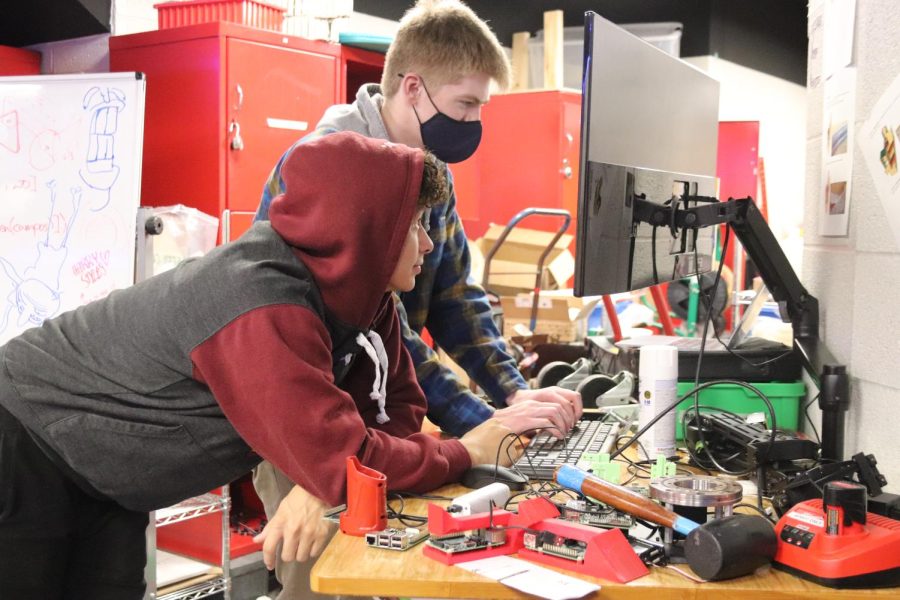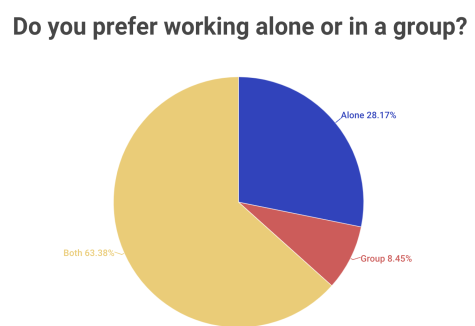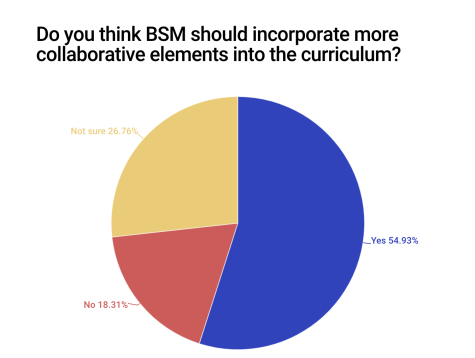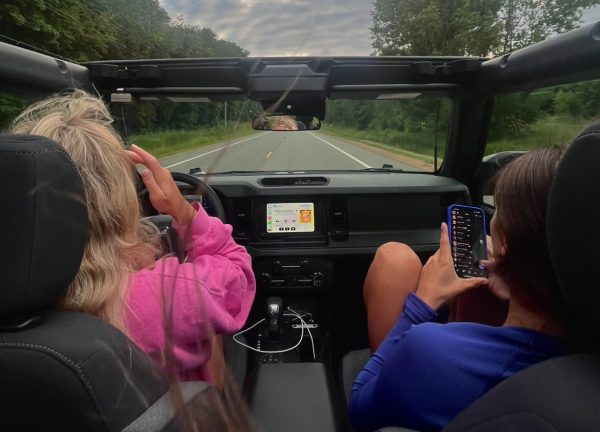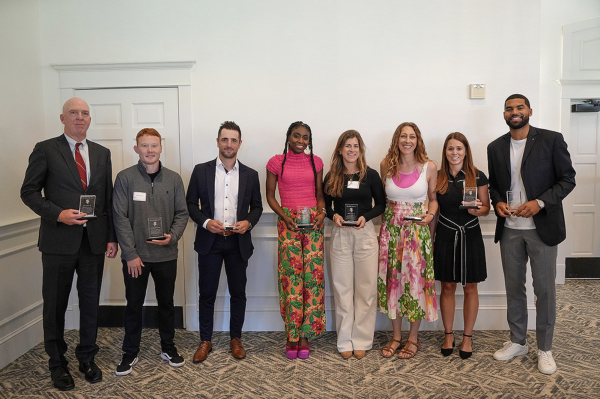Future of BSM: Collaborative Learning
Engineering students working together to complete a project in the Engineering workspace.
Over the years, Benilde-St.Margaret’s has been working on increasing collaborative learning elements throughout the school. With additions such as The Cube, the atrium, and hands-on classes, BSM continues to push for more collaboration.
Many educators and students know that collaboration is an important part of a learning environment. BSM has fostered a safe environment between teachers and students that allows for students to work together and gain knowledge in a way that helps prepare them for real-world experiences. In years past, BSM has been rather successful in collaboration, but administration, students, and teachers alike are still striving for more.
Physical Spaces
A designated space for students to be able to collaborate with others is crucial to a learning environment, especially in classes that are centered around group work.
BSM has a multitude of spaces that allow for students to collaborate. For example, the atrium allows for speakers to come in and classes to be held, and The Cube allows for group studying and meetings that utilize the conference rooms. So far, BSM has been successful in the spaces that they have offered.
Ms. Anne Dougherty is one of the four teachers in BSM’s engineering department. Engineering is taught in the basement, in a space that hardly resembles a traditional classroom setting. In a class like engineering, a space that satisfies the needs of the course is necessary. “Space matters, and for a lot of reasons. To be collaborative, you have to have intellectual space, you have to have room to imagine and think and listen to other people’s ideas,” Dougherty said.
However, many collaborative classes at BSM lack the space to best run their classes. For example, yearbook is a student-run class offered at BSM, but as of now, it takes place in a traditional English classroom. “So, with a collaborative course, all of this is going on at once, a space that would be conducive to that would make this work better, easier, more efficient and more geared toward 21st century learning,” English teacher and yearbook advisor, Mrs. Katie Belanger said.
In the coming years, faculty at BSM hopes to see more ideas for learning spaces that are favorable for all types of learning. Collaborative classes are mainly centered around group work, however, there are elements that require a quiet environment, so a space that offers versatility is essential. “For some kids that is how they want to work all day long, and for some kids it’s not so really honoring where people perform the best feels important,” Dougherty said.
Furthermore, BSM hopes to offer classes and spaces that allow for a variety of classes to meet and collaborate. Since the opening of The Cube in December of 2020, students have greatly utilized the space as a shared area to complete work. However, some classes have pushed for access and it hasn’t worked out. This is partly due to the fact that The Cube is often crowded, making it difficult for classes to work in an efficient manner. “I was really hoping we could use The Cube for yearbook when it first opened up. I was thinking that would be a great space for the Knight Errant, the kids in yearbook, graphic designers and photographers to all meet during sixth period. But that isn’t the case,” Belanger said.
Collaborative Experiences
BSM strives itself in offering courses that encourage students to collaborate and prepare for real-world experiences. Through student-led classes like journalism, yearbook, and engineering, BSM students are able to picture themselves in a fast-paced work setting that involves problem solving, professional interaction, and critical thinking.
Even in traditional classes, BSM incorporates different collaborative elements, such as curiosity, creativity, perseverance, and good communication skills. “Learning how to communicate, how to share your ideas, how to generate lots of ideas confidently and how to work together with lots of different styles is pretty much the most important skill that you’re going to need to be successful as a professional,” Dougherty said.
Learning how to communicate, how to share your ideas, how to generate lots of ideas confidently and how to work together with lots of different styles is pretty much the most important skill that you’re going to need to be successful as a professional
— Dougherty
At this point in time, BSM offers many specialty classes, such as the journalism course, engineering, coding, product design, etc. These classes are specifically designed for collaboration, and to encourage real-world thinking. But, in the coming years, the goal is to incorporate these elements into every class, involving different departments working together. “We have really specialty classes, but then we also want it to permeate everything. It’ll take time to kind of get to that, because it’s not a traditional methodology,” Director of Learning and Technology, Steve Pohlen said.
A big part of increasing collaborative elements at BSM involves creating relevant, exciting opportunities for students. “My dream is that [BSM] becomes an incubator, so students go out of the building to do cool things, but also that we have cool things that are generated inside the building that go on to have an impact in the real world,” Dougherty said.
In the future, BSM is working towards a curriculum that continues to prepare students for real-world experiences. “I hope that we get to a point where collaboration is the norm rather than the exception,” Pohlen said.











































